
Intermountain Life Flight - Adult and Children’s Critical Care Specialists

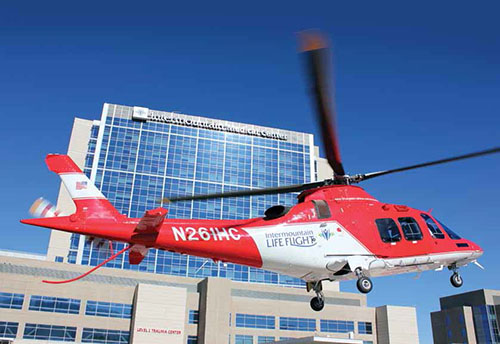
Intermountain Life Flight began HEMS in July 1978 in Salt Lake City. The service was based out of Latter Day Saints (LDS) Hospital and consisted of one Alouette helicopter under contract from Rocky Mountain Helicopters (RMH), six nurses, 10 paramedics and two pilots. The first flight took place on July 6. The flight team flew to Roosevelt, Utah, 125 miles east of Salt Lake City, to pick up a patient who had an accident with a bulldozer. The man sustained injuries to his arm and chest. After being stabilized at the Duchesne County Hospital, he was flown to LDS Hospital in Salt Lake City. After a few days there, he was released and went home with a model helicopter that commemorated the first flight of Intermountain Health Care’s air ambulance service. Fixed-wing operations had already been in service since 1972, based at the Salt Lake International Airport. In 1981, Rocky Mountain Helicopters became the primary service provider of fixed-wing services for Intermountain Life Flight with a Cessna Conquest and a Cheyenne II.
From July to December 1978, Intermountain Life Flight made 160 patient transports. To put this in a historical perspective, elsewhere in the country, Jimmy Carter was president, Scott Matheson was governor of Utah, gas cost 63 cents per gallon and a new Subaru cost $3,289. The Washington Bullets won the NBA Championship, Sony introduced the first video cassette recorder, the Bee Gees topped the charts with “Stayin’ Alive” and Farrah Fawcette was America’s sweetheart!
In 1978, Intermountain Life Flight was the seventh air medical helicopter service in the United States. By 2003, there were more than 545 medical helicopters based at more than 470 bases across the country.
April 1979 saw the Intermountain Life Flight pediatric team begin service with eight flight nurses specializing in care and transportation of pediatric patients from regional hospitals. In 1989, a second Alouette helicopter was placed in service and based at Primary Children’s Medical Center, staffed with a flight team consisting of a pilot, nurse and pediatric nurse.
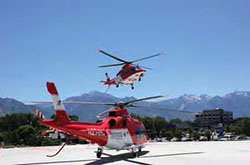
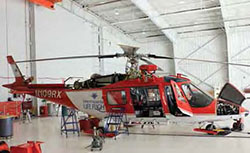
The University of Utah transferred its neonatal special care unit to Primary Children’s Medical Center in 1990. During that same year, the team was designated as a special care transport team for Intermountain Life Flight. Utah Valley Medical Center also had its neonatal transport team join Intermountain Life Flight that year.
In 1993, Intermountain Life Flight made the decision to purchase two Agusta A109 K2 helicopters. Replacing the older Alouette helicopters with twin-engine aircraft that could perform at high altitude was a critical factor in the decision-making process. The K2 was well suited for search-and-rescue missions in the mountains of Utah, as well as the range and speed required for patient transports from regional hospitals. Additionally, the A109K2 was well suited for hoist operations and was being considered in future planning.
Intermountain Life Flight purchased three King Air B-200 twin-engine aircraft in 1998, and in July of the same year became the first air medical transport service to be accredited in the state of Utah, by the Commission on Accreditation of Medical Transport Systems (CAMTS.)
Intermountain Life Flight became a Part 135 operator in December 1999.
August 2000 saw Intermountain Life Flight expand operations by basing an Agusta A109K2 at Utah Valley Regional Medical Center to more effectively serve San Juan, San
Pete, Millard and Seiver Counties. During this period, flight teams were on duty at the hospital 12 hours per day, 365 days per year.
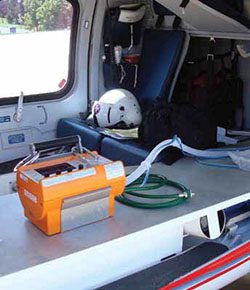
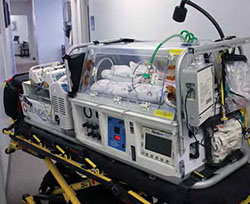
By 2001, Intermountain Life Flight had begun flight operations in northern Utah, based at the new McKay-Dee Hospital in Ogden. This offered both adult and pediatric flight team services to northern Utah, Idaho and Wyoming. The adult flight teams are stationed at that hospital 24/7/365. The pediatric flight nurse, who is the fourth member of the flight team, is based at McKay-Dee Hospital for 12 hours per day.
After a lengthy certification process in 2001, Intermountain Life Flight became the first civilian FAR135/133 hoist operator in the United States. Hoist operations commenced in the spring with the first hoist rescue mission taking place in a steep canyon east of Bountiful, Utah. In 2005, the decision was made to base the hoist team and helicopter at McKay-Dee Hospital. This provided a rapid team response to Utah ski resorts as well as remote recreational areas in northern Utah and along the Wasatch Front. The hoist team has conducted rescue missions in Idaho, Wyoming and Arches National Park in southern Utah.
Intermountain Health Care and Intermountain Life Flight was selected to provide health care and air medical services during the 2002 Winter Olympics in Salt Lake City.
In 2004, the flight team at Utah Valley Regional Medical Center began 24/7 flight operations. With the helicopter based in Provo, Utah, response times to major recreational destinations was enhanced as was the ability to quickly and efficiently transport patients from regional hospitals in central Utah. The night vision instrument system (NVIS) program was also launched in 2004 and all its helicopters were upgraded to FAA approved NVIS lighting
Intermountain Life Flight moved into a new operations center at the Salt Lake International Airport in March 2004. The center provides administrative offices, training facilities, hangar and maintenance spaces for twp King Airs and three helicopters, day rooms, kitchens, a flight-planning center, sleep rooms for crews and the Life Flight Communication Center.
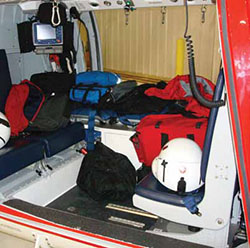
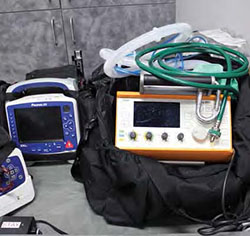
In 2005, a Life Flight neonatal transport team was placed in service at Dixie Regional Medical Center in St. George, Utah. Early 2006 saw the new Intermountain Healthcare Physician’s Referral Center based at the Intermountain Life Flight hangar become operational.
In 2010, Intermountain Life Flight began looking at the Agusta A109SP “Grand” as a replacement aircraft. The first Grand was placed in service February 2011 at the new Dixie Regional Medical Center in St. George. Two more were put in service in June 2012.
Our interview continues with Jim Gust, Intermountain Life Flight’s director of maintenance.
HeliMx – Hello Jim, how many pilots and EMS personnel are in your employ?
Gust - We have our executive director Jerry Morrison, our medical director Frank Thomas M.D., myself as director of maintenance, our aviation assistant Patricia Stone, eight mechanics, our director of operations Bill Butts, our chief pilot Kent Johnson, and 31 pilots. Thirteen pilots are fixed wing and 18 pilots fly our helicopters. We have 70 nurses and 37 paramedics. The paramedics include both full-time and part-time employees.
HeliMx – How large an area do you cover?
Gust - We have strategically positioned our four bases to allow helicopter coverage for the entire state of Utah, as well as southern Idaho and northern Nevada. Our fixed-wing operations covers the entire western U.S.
HeliMx - How many helicopter flight hours did you total last year?
Gust – We flew 1,600 helicopter flight hours.
HeliMx - How many patients did you transport?
Gust – Between fixed-wing, helicopter and ground vehicles we transported 3,400 patients.
HeliMx – Are you certified as a Part 145 Repair Station?
Gust – No.
HeliMx – Do you do your own maintenance or is it outsourced?
Gust – We do all of our own maintenance in-house, except for component overhauls.
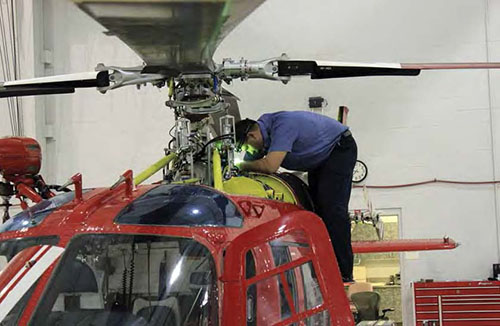
HeliMx – How many maintenance shifts do you operate?
Gust - All mechanics work 10-hour shifts Monday through Thursday. One mechanic works Wednesday through Sunday. The schedule rotates so each mechanic will cover the weekend every six weeks. One mechanic in Salt Lake City and one mechanic in St. George are always on call. This schedule also rotates and allows a day overlap for the mechanic going on to weekends to ensure continuity of all current maintenance activities.
HeliMx – Does weather affect how and when you perform maintenance?
Gust - The winter weather in the Salt Lake Valley can be a challenge for flight operations. When aircraft are relocated to the operations center for weather, the out-of-service time for weather is taken advantage of by maintenance. Any inspections that are near their time are completed.
HeliMx - Do you have any problems with the aircraft getting cold soaked?
Gust - Typically the aircraft are relocated to a hangar facility when the temperature is forecast to be below 10 degrees. During those times that aircraft have not been able to relocate due to visibility, tarps and heaters have been used to warm the aircraft.
HeliMx - In a typical 30-day period, how many and what type of helicopter inspections do you normally perform?
Gust - The Agusta A109K2 requires a 25-hour/30-day inspection. The Agusta A109SP requires a 50-hour/60-day inspection. The average day or week is usually not average. With seven aircraft in service, the maintenance department has to be flexible at all times. The aircraft you want to fly hours on to reach an inspection due point will fly less than usual. The aircraft you want to conserve hours will increase flight time, so you are always tracking and guessing what inspection is going to be due next … not to mention estimating what day the inspection will need to be done. One advantage of the “like aircraft” in the fleet is it allows us to move or trade aircraft from the bases to increase or slow down flight hours. This is very helpful when there are multiple inspections on the horizon.
HeliMx - Of all the maintenance tasks that you perform, which have you found to be the most labor intensive and time consuming?
Gust - As the fleet has aged, sheet metal work has become more intense on the aircraft, particularly the Agusta A109K2. We are approaching 9,000 hours on one aircraft and we have experienced some major sheet metal repairs. The aircraft has been out of production for some years, making the availability of stringers or ribs needed to perform the repairs difficult to obtain. In some instances, it has taken over 30 days to get the parts in house. Fortunately, these types of repairs are rare.
HeliMx - Do you have any lessons learned or tips you can share with our readers on a particular task that you found can improve on the maintenance process in the way of saving time, cost, materials, etc?
Gust - Intermountain Life Flight has found that cross training the mechanics has shown a significant improvement in the efficiency of the maintenance department. Most flight programs have helicopter mechanics and separate fixed-wing mechanics. Here we have trained all the mechanics to be proficient on both fixed wing and helicopters. Implementing this approach has not only given flexibility and opportunity to the mechanics, it has provided a net increase in man power and efficiency to our maintenance program.
HeliMx - Who performs preflight and post flight inspections on the aircraft?
Gust - The pilot performs the preflight/post flight inspections. The Agusta K2 does not have a daily inspection requirement. Our maintenance department has a set standard to perform a daily inspection if the aircraft flies more than one hour. The A109SP has a daily fuselage inspection. This requires an inspection every 24 hours if the aircraft flies.
HeliMx - Who has the responsibility for assigning aircraft to flight operations?
Gust – We implemented “operational control” in March 2007. The controller has access to the aircraft status database (Avtrak) and maintenance calendar to ensure that the aircraft are flight ready. The ops controller also ensures that the pilot and crew are current in the aircraft to include NVIS currency. All of the currency due dates are tracked in a Webbased database.
HeliMx - Who assigns the maintenance tasks to be done each day?
Gust - A weekly maintenance meeting is held and the mechanics discuss the status of each aircraft. The maintenance is scheduled by the maintenance department on the Web-based maintenance planning calendar. This calendar is viewable by operational control as well as all pilots and administration.
HeliMx – Please describe what takes place during a typical day in the life of the maintenance department.
Gust - Each mechanic is assigned a specific aircraft. The mechanic will look at the aircraft database prior to leaving for work each morning. Depending on when their aircraft last flew, they will report directly to the hospital and complete the daily inspection. Upon completion of their duties at the hospital the mechanic reports to the operation center. On a typical day, all mechanics are at the operations center by 10:00 a.m. At that point, everyone focuses on the aircraft that might be in for inspection. Monday through Thursday are heavy maintenance days. Having one mechanic on duty Friday through Sunday, we want him to focus on the daily inspections. One mechanic will drive about 150 miles round trip in a day to see all of the aircraft that are his responsibility.
HeliMx - Have you started any initiatives regarding the push towards a safety management system (SMS)?
Gust - Intermountain Life Flight has an extensive QA process. We are trying to organize what we have in place to develop an SMS program.
HeliMx – Last but not least, if you were looking to hire a new mechanic, what skill sets would you be most interested in?
Gust – Having an A&P ticket is a must and any experience on helicopters is always a plus. A key area I look for is a willingness to learn. You can spend a great deal of time and money on training, but there has to be a desire on the individual’s part to want to learn more.
Intermountain Life Flight is committed to providing excellence in air transport services to hospitals and EMS agencies in the Intermountain West. With medical teams that include adult, pediatric, neonatal and respiratory specialists, Intermountain Life Flight delivers extraordinary patient care utilizing the safest, quickest and most appropriate means of transport by helicopter, fixed wing or ground ambulance.
